
Following the Jade Trail: Searching for Answers Along the China-Myanmar Border
This photo essay is the second installment in NRGI's 2015 extractive industries photo documentary project, which aims to capture the complex political, environmental and social realities at resource extraction sites throughout Myanmar.
Traveling to Myanmar's Kachin state in 2014, I spoke with a man worried that this “land of jade” could be left barren within a decade – destroying any hope that the region's rich endowments of gemstones would fuel local development. Each year large quantities of jade mined in Myanmar seep illegally across the country's northern border into China's Yunnan province, where jade is more highly prized than anywhere else in the world. Most revenues from the multi-billion dollar shadow economy escape government taxation.
I have traveled to northern Myanmar on five occasions to photographs different facets of the jade industry, including last year when I documented the lives of Kachin's freelance jade miners, many of whom live in poverty and are addicted to heroin.
This year, I returned with a different objective: to trace the routes by which gemstones illicitly pass from Myanmar into western China. Jade traders I spoke to indicated two main routes through which jade flows, untaxed. Some travels from Hpakant, the origin of almost all of the world’s best jade, through Myitkyina—the capital of Myanmar’s Kachin state—across the Chinese border to Yin Jiang county in Yunnan. A second route delivers jade directly to Ruili, the most important point for China-Myanmar border trade.
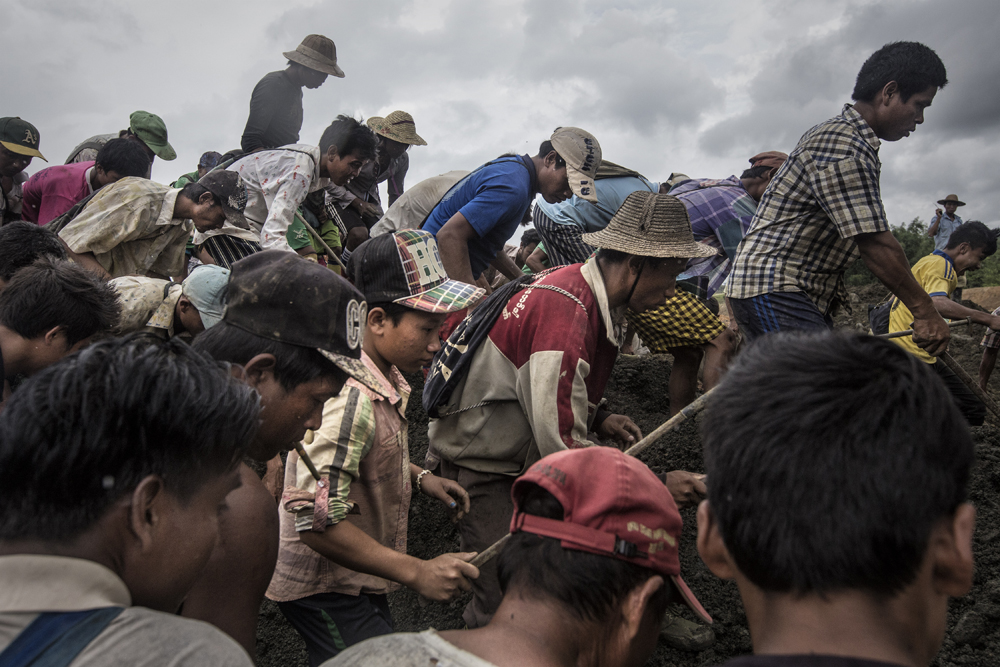
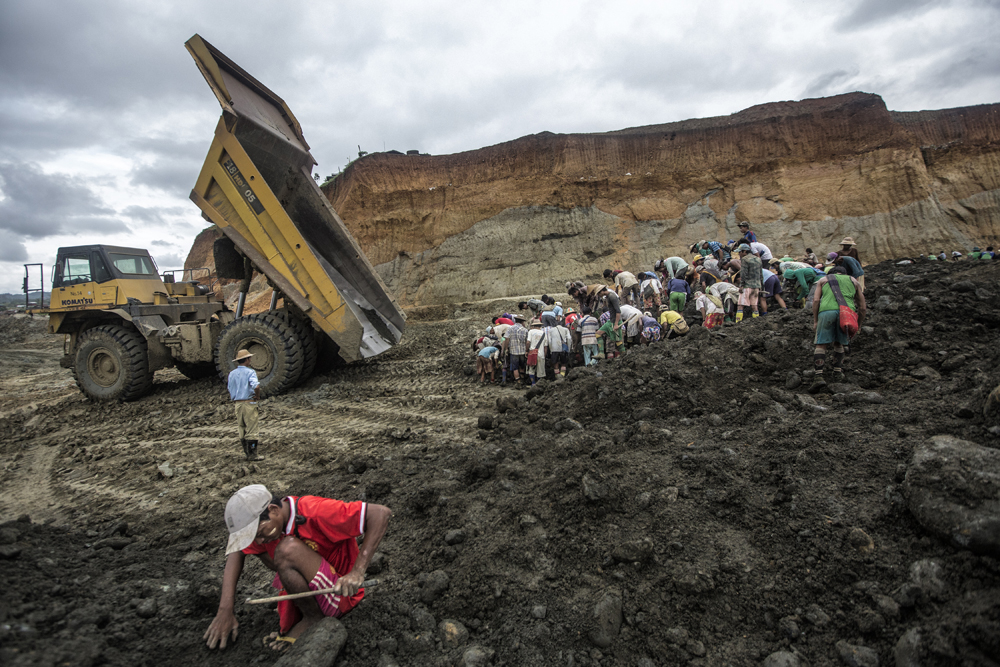
Freelance miners race to a pile of earth dumped by a mining company in Hpakant, in Myanmar’s Kachin state. Credit: Minzayar for NRGI
The road from Myitkyina to the Chinese border is the best I have ever traversed in Myanmar. Shrouded in fog and cloud, tiered mountains and deep green forests added a dose of mystery to this majestic route. After passing through checkpoints operated by Myanmar immigration and the Border Guard Force, I arrived in a border town called Kam-Pai-Tee. Here I had to leave the minivan that carried me from Myitkyina and get into a shared Chinese car that would take me into Yunnan province. The red border passbook from the Myanmar immigration department that I needed to legally enter China cost me about 6,000 kyats (just under $5).
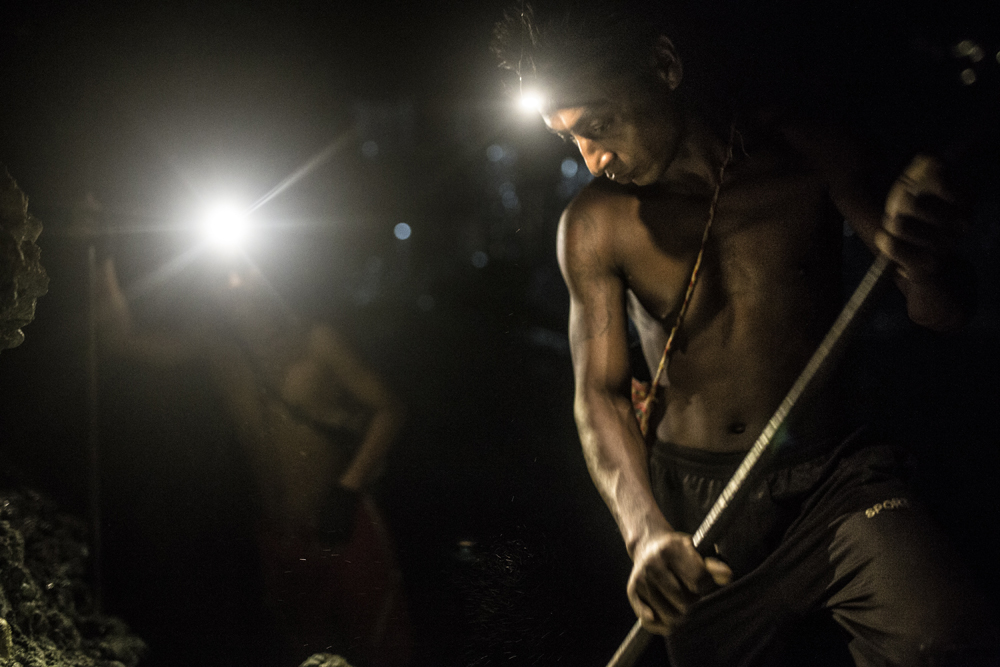
Freelance miners at night using a head torch scavenge for raw jade at a company mining site in Hpakant. Credit: Minzayar for NRGI
As our car departed Kam-Pai-Tee, one of my fellow passengers, a Kachin black market jade trader, complained about a recent experience with the immigration police there. “A few weeks ago, I tried hiding with me a good piece of the raw jade stone to avoid paying the hefty fee for a jade smuggler,” she told me. “But a police officer found it and threatened to arrest me, so in the end I had to pay him about 200,000 kyats. What a bad idea! I should have just trusted it to the carrier who knows how to deal with them.” As she finished her tale we were approaching the “Myanmar-China Friendship Tunnel” that marks the frontier between the two countries.
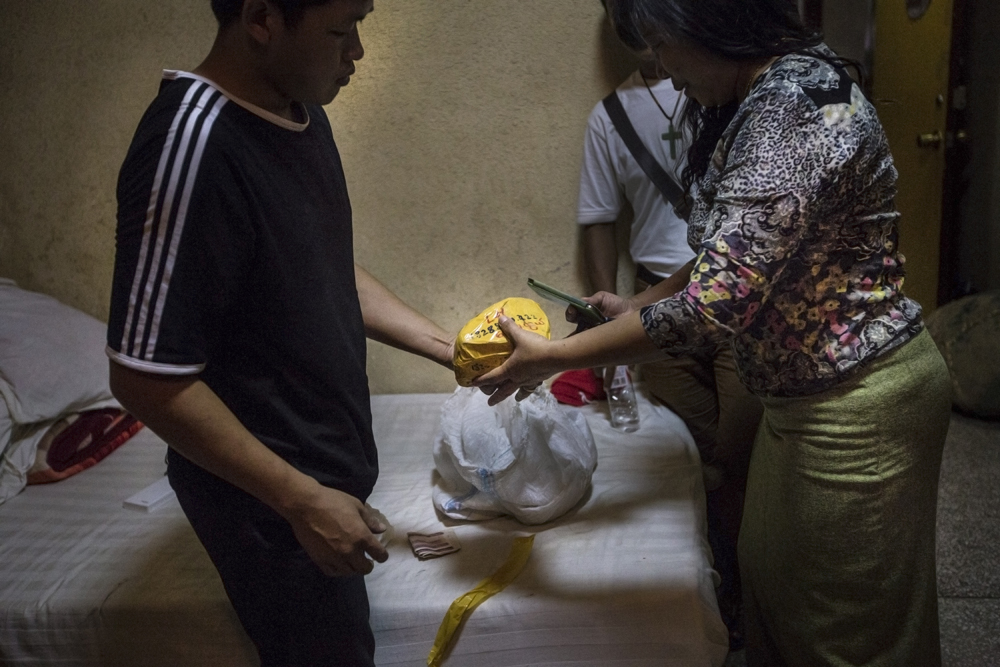
A jade trader from Kachin state picks up the raw stone brought into China by a carrier at a hotel room in Yin Jiang, China. Credit: Minzayar for NRGI
Jade traders normally pass through the official border crossing empty-handed, trusting the covert transit of their jade to a professional smuggler. Traders told me that smugglers will charge based on the stones’ weight or, if a stone is of particularly good quality, negotiate for a higher cut.
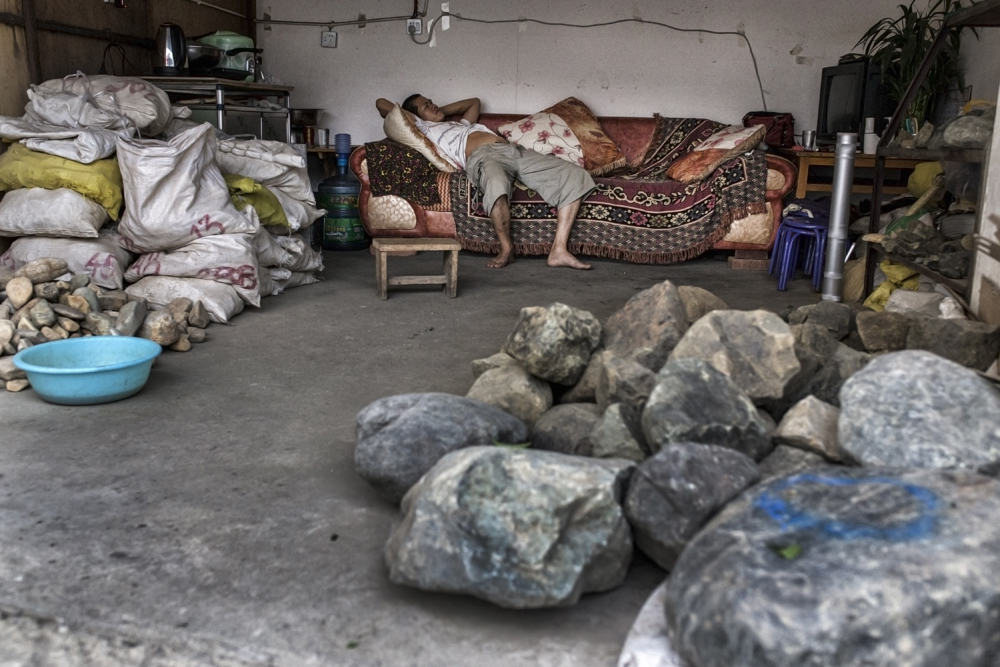
A Chinese man relaxes on a couch in his store in Yin Jiang, China, where he sells raw jade stones brought from Myanmar. Credit: Minzayar for NRGI
After transferring to a third car in the Chinese border town of Teng Chong, we finally arrived in Yin Jiang, which is along a section of the ancient Silk Road trading network. I quickly discovered that the lower floors of most hotels there are fully booked. But only later did I learn these dimly lit rooms serve as rendezvous points for jade traders and smugglers.
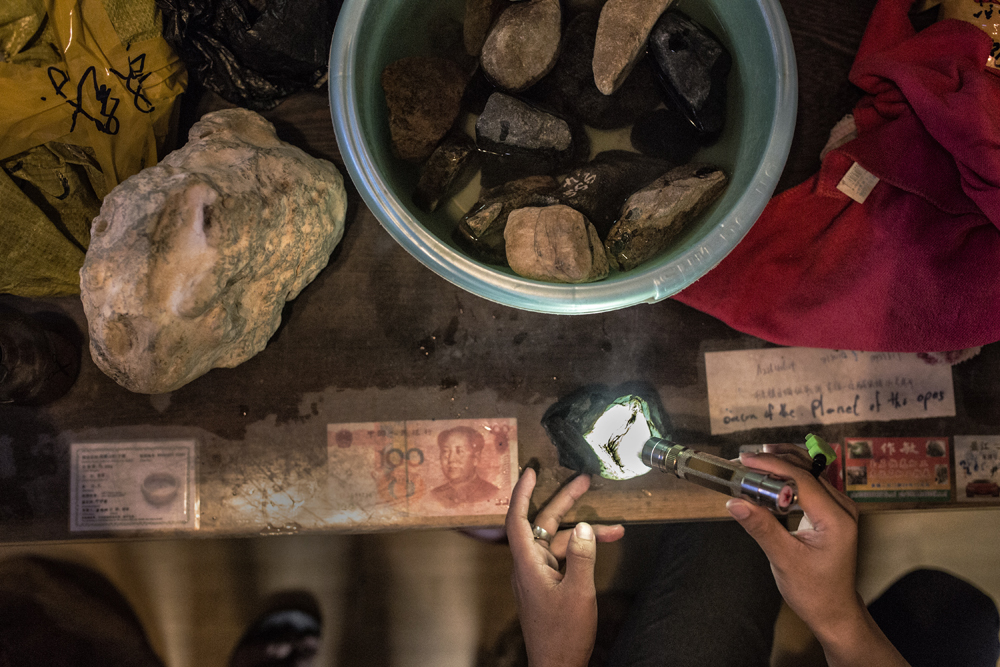
A Chinese trader inspects a jade stone worth between $20,000 and $30,000 at a hotel room in Yin Jiang. Credit: Minzayar for NRGI
Traders told me that not even the owners of the smuggled stones know in which cars their raw jade is hidden. Once they arrive at the hotel compounds in Yin Jiang, the smugglers remove stones in the secrecy of a makeshift garage. The jade, packed in yellow wrappings and marked for identification, is delivered to hotels rooms for later pick-up by traders.
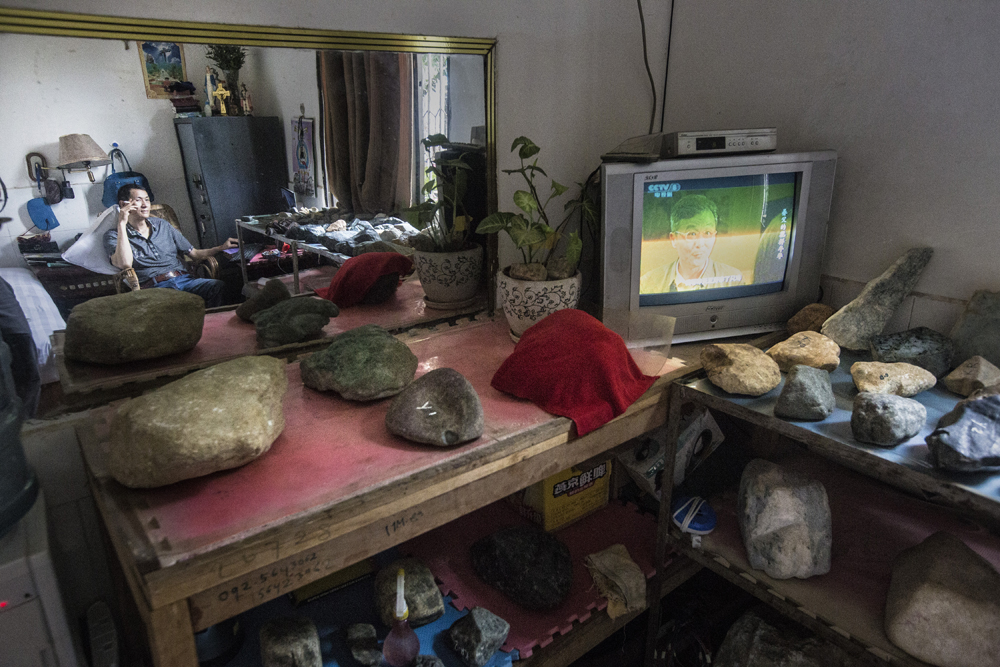
A Chinese trader waits for customers in the rented hotel room where he keeps raw jade stones brought from Kachin state. Credit: Minzayar for NRGI
Although the jade border trade is illegal under Myanmar law, I visited many businesses displaying raw jade from Myanmar in the streets of Yin Jiang, including a bustling open-air jade market in the town center. Some shops display a Chinese certificate of legality, but others do not. “Stones are dissolved into the Chinese market without Myanmar government tax,” one Kachin trader told me while showing a beautiful apple-size piece of jade which he keeps stored in a safe. He expects that the stone could fetch as much as 50 million kyats ($40,000).
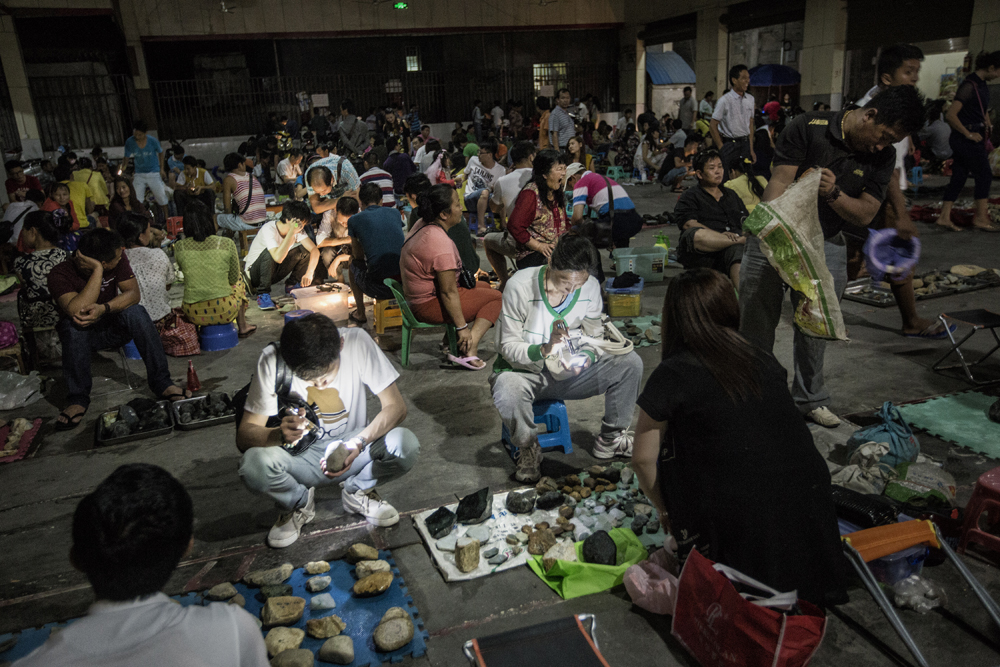
An open-air jade market in Yin Jiang. Credit: Minzayar for NRGI
Reentering Kachin state, I passed a camp for refugees displaced by fighting between the Myanmar military and the Kachin Independence Army (KIA). My head swam with questions: How much of the jade produced in Myanmar is vaporizing, uncontrolled, into China? What is the value of the illegal trade? Most importantly, how could this lost revenue help rebuild the lives of refugees, impoverished miners, and others living in Kachin state? I, for one, plan to be back on the jade trail in search of answers.
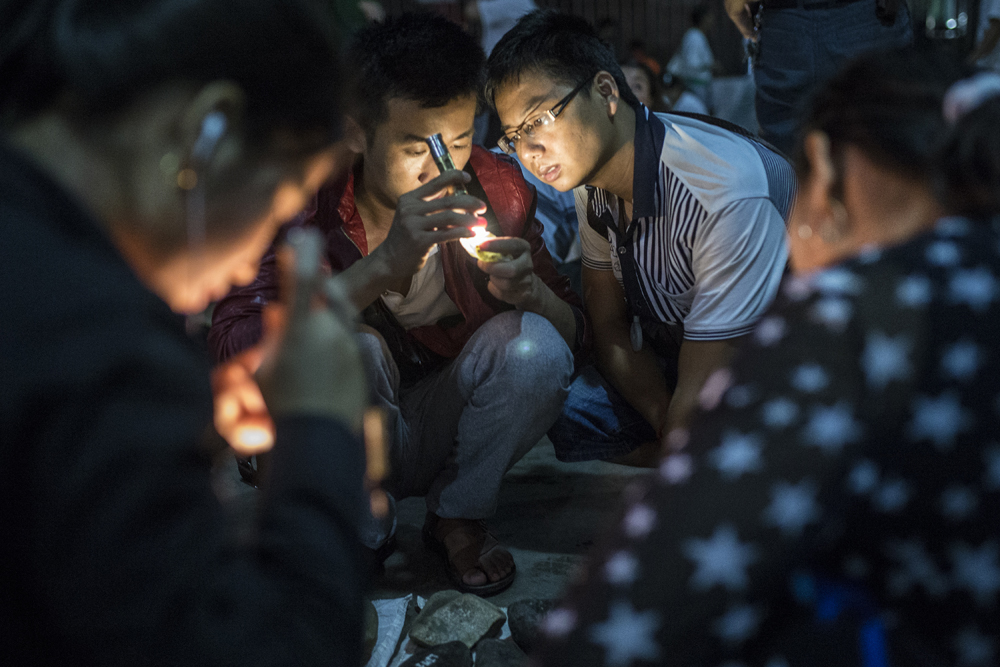
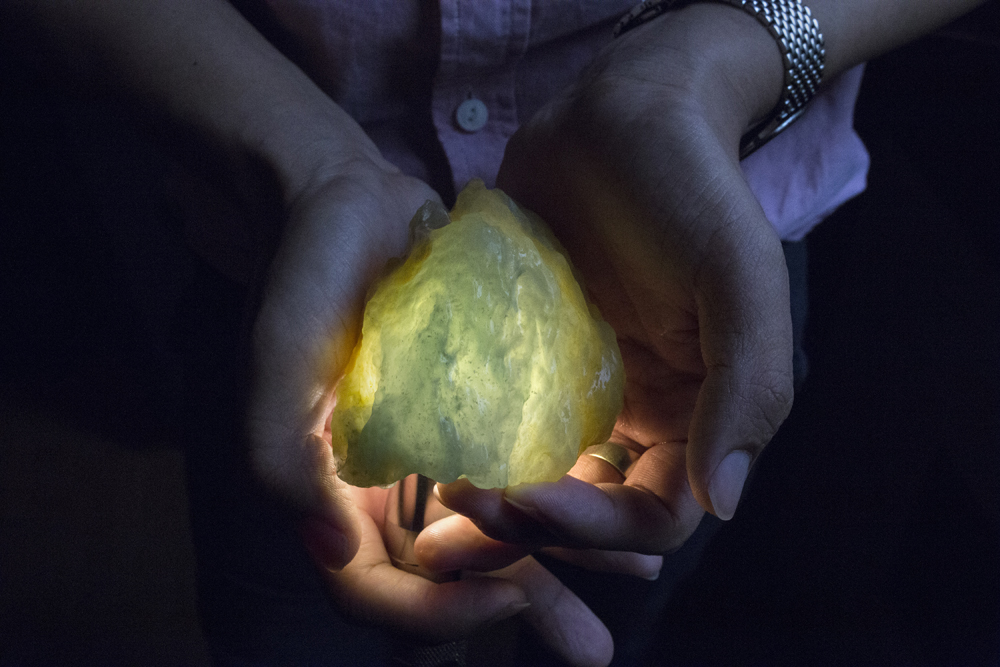
A trader shows a jade stone which he estimates is worth at least USD 40,000 in Yin Jiang. Credit: Minzayar for NRGI
Minzayar Oo is a Burmese photojournalist based in Yangon, Myanmar.
The views he expresses here are his own, and do not represent NRGI. NRGI cannot guarantee the accuracy, completeness and validity of any statements made within this article. NRGI accepts no liability for any errors, omissions or representations.
